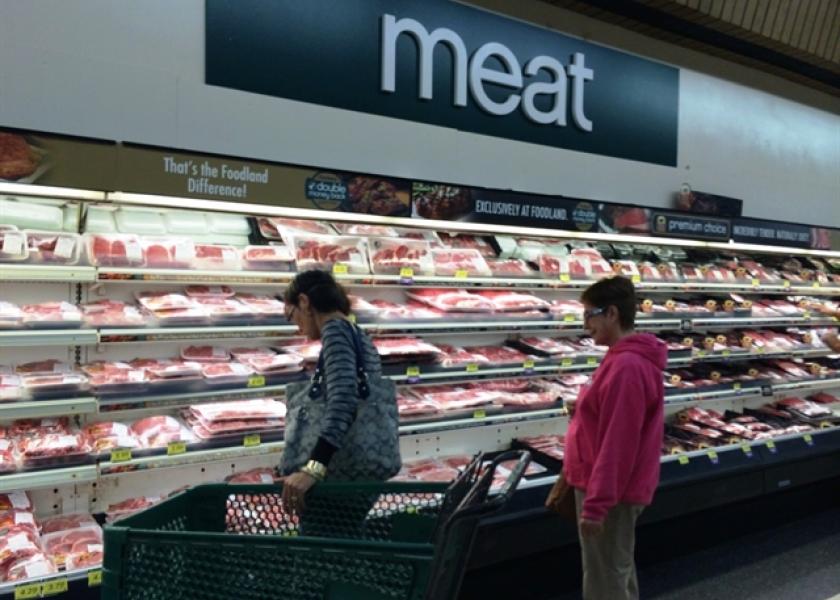Meat Substitution Effects

By: Glynn T. Tonsor, Associate Professor, Department of Agricultural Economics, Kansas State University
Among the many issues generating anxiety for some industry stakeholders is the possible impact on retail beef prices (and hence derived prices at wholesale and live animal levels) of changes in available supplies of competing meats. While this is a long-standing topic, the combination of increased domestic pork and poultry production, reduced meat exports reflecting exchange rate adjustments, and extended impacts on exports from Avian Influenza outbreaks have further elevated interest. Accordingly it is useful to step back and consider retail-level substitution of competing meat products in more detail.
At the heart of this discussion is an expectation that an environment of "expensive" beef products coupled with growing domestic availability of "less expensive" pork and poultry products will lead to substantial substitution away from beef offerings. While relative-price effects are indeed worth monitoring, it is also important to consider longer-term adjustments in the U.S. public's willingness to substitute pork or poultry for beef.
First, consider two prominent meat demand studies published in the mid-1990s. Utilizing data spanning from 1970 to 1993, research by Brester and Schroeder (1995) indicates pork and poultry are substitutes for beef. Similarly, Kinnucan et al. (1997) find evidence of pork and poultry being beef substitutes examining the 1976-1993 period. These findings, driven by data 20 to 45 years old, are aligned with current concerns about substitution away from beef.
Conversely consider two alternative studies published this decade. Tonsor, Mintert, and Schroeder (2010) utilized data from 1982-2007 to estimate similar meat demand models and did not find statistical evidence of pork and poultry being substitutes for beef. Research by Tonsor and Olynk (2011) used 1982-2008 data and reached the same conclusion as Tonsor, Mintert, and Schroeder (2010).
While a much more extensive literature review and empirical assessment on changes in retail-level substitution effects would certainly be valuable it is beyond the scope this article. Nonetheless, the clear implication of changes suggested by these four studies is that the magnitude of substitution from beef to competing meat products may well be declining over time. When one observes the increased prevalence of dual-income households, adjustments in food-away-from home consumption, etc. over the past couple decades a strong argument can be made that significant change in meat purchasing patterns has occurred leading U.S. consumers to be less sensitive to relative prices of competing meats than they used to be.
While there will always be an economically relevant impact of developments in the pork and poultry industry on the beef industry, there is no reason to believe those impacts must be the same as they were in the past. Similarly, it is not written in stone that future impacts across industries will resemble those observed today. All industry stakeholders are encouraged to recognize these broader changes and implications.
References:
Brester, G.W. and T.C. Schroeder. 1995. "The Impacts of Brand and Generic Advertising on Meat Demand." American Journal of Agricultural Economics 77:969-979.
Kinnucan, H. W., H. Xiao, C. Hsia, and J. D. Jackson. 1997. "Effects of Health Information and Generic Advertising on U.S. Meat Demand." American Journal of Agricultural Economics 79:13-23.
Tonsor, G.T., J.R Mintert, and T.C. Schroeder. 2010. "U.S. Meat Demand: Household Dynamics and Media Information Impacts." Journal of Agricultural and Resource Economics 35:1-17.
Tonsor, G. T. and N. Olynk. 2011. "Impacts of Animal Well-Being and Welfare Media on Meat Demand." Journal of Agricultural Economics 62: 59-72.







